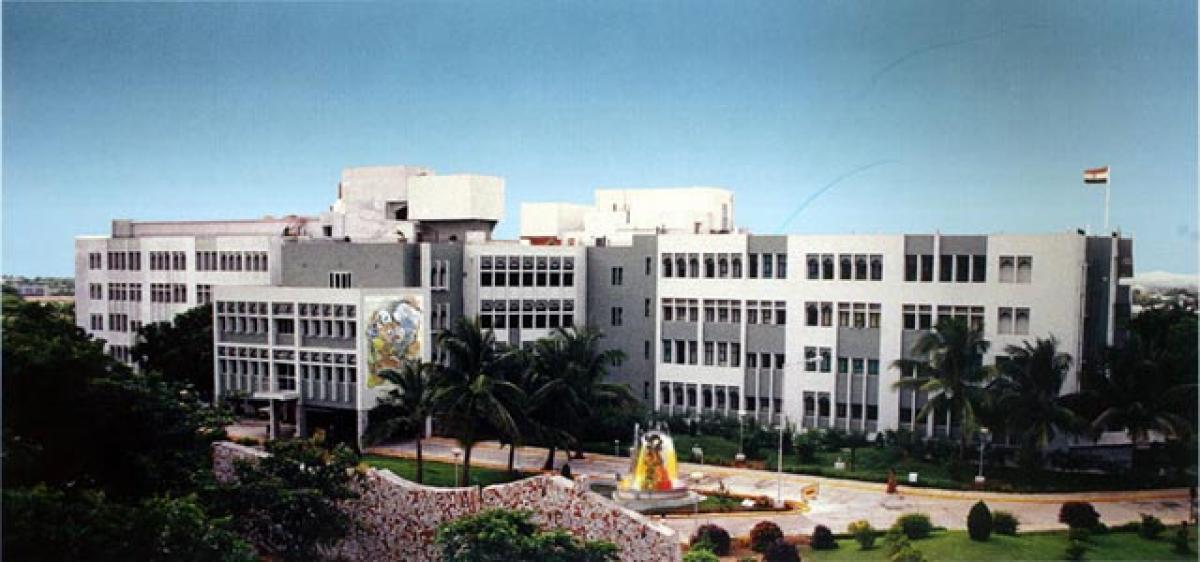Live
- Job mela at Masab Tank tomorrow
- New toilets facilitated for MPP school students
- Steps to safeguard natural springs gain momentum
- RWAs want officials to clear fog over SCB-GHMC merger
- Tanks, canals remain neglected despite execution of MGNREGS works
- BRS to celebrate Deeksha Diwas on Nov 29, Dec 9
- NCC Day grandly celebrated at SITAM
- CITU demands rollback of strategic sale of VSP
- 7-Year-old girl sexually assaulted in Tirupati
- PM Modi highlights govt's efforts to make Odisha prosperous and one of the fastest-growing states
Just In
Hyderabad research hubs lead the pathway to new drug discoveries


India is one of the biggest producers and exporters of generics in the world, but it has a rather abysmal record in discovery of new drugs and developing new chemical entities.
India is one of the biggest producers and exporters of generics in the world, but it has a rather abysmal record in discovery of new drugs and developing new chemical entities. The dearth of initiatives in research and development activities though appalling is not surprising considering the fact that a majority of the drugs produced in the country are replicas of off-patent drugs which could legally be reproduced.
Indian generic drug manufacturers have a big assured market in the USA and Europe. While it cannot be denied that large scale production of generics has given people of the country access to low cost and affordable drugs compared to their branded versions, the lack of initiatives, especially on the part of the big pharma players is inexplicable. The biggies who rake in huge revenues usually cite financial constraints as the reason for their not being able to afford R&D investments.
This being the case with the private pharma players, especially in Hyderabad, which is considered as the pharma capital of India, a major contribution towards new drug discoveries is coming from premier public sector research institutions. And, significantly most of these developments related to medicare are emanating from Hyderabad-based institutions like the Centre for Cellular and Molecular Biology (CCMB), Indian Institute of Chemical Technology and the Indian Immunologicals Limited.
The CCMB which is working on a gamut of game changing technologies from nanotechnologies for medical applications to stem cell therapies, have in their repertoire crucial breakthroughs, one among the many innovations the DNA based eye diagnostic chip that could enable the detection and identification of pathogens that cause eye infections. One among them is the development of DNA based eye diagnostic chip to detect and identify pathogens that cause eye infections.
Another, exciting development happening at the CCMB, which in the near future will provide solutions to an extensive range of health problems, is the creation of nano particles – labeled as the magic bullets - for drug delivery. These particles are programmed to deliver drugs at the exact location of the problem site, i.e.at the infected cell. Another amazing possibility is its application to treat cancer. The particles will identify the cancer cells, bind with them and release the drug. This drug delivery platform has proved to be effective in treating ophthalmic applications, specifically Fungal Keratitis – an inflammation of the eye’s cornea.
The Indian Institute of Technology (IICT) also has a productive track record in the area of new drug discovery and also developing affordable substitutes of essential drugs for HIV and asthma with the latest being the breakthrough in coming out with a drug to combat multi-drug resistant tuberculosis. In addition to these, two more drugs against cancer is also in the pipeline,
Indian Immunologicals (IIL) has carved a niche in the vaccines segment with around eleven vaccines, including those against Hepatitis, Chikungunya, Japanese Encephalitis, Pneumonia, Typhoid and Rabies in advance stage of development, All these institutions have proved to be beehives of innovations and demonstrated the pathways for drug discoveries. With such proven credentials, Hyderabad has the potential to become the nerve-centre of new drug discoveries in India.
By Satyapal Menon

© 2024 Hyderabad Media House Limited/The Hans India. All rights reserved. Powered by hocalwire.com






